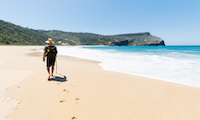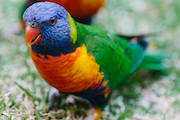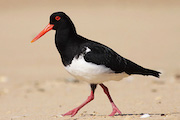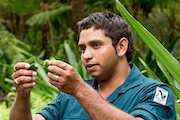Little penguin
Booderee’s little penguin - or fairy penguin - provides one of the park’s great wildlife experiences. The little penguin is the smallest species of penguin, growing to just 30 centimetres in height. Its head and upperparts are blue-grey and its underparts are white.
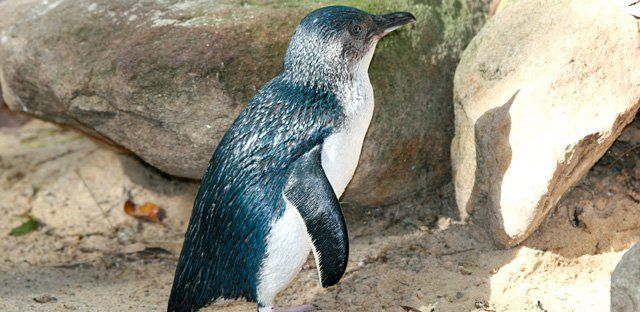
Little penguin
Feeding
Booderee means ‘bay of plenty’, and unlike populations elsewhere, Booderee’s little penguins generally forage in the bays close to shore, probably because the pickings are so rich there is no need to travel kilometres in search of food. From dawn to an hour before dusk, swimming with their flippers and using their tails for guidance, they feed on small fish, squid and other small sea animals captured and swallowed underwater.
After feeding, the little penguins remain offshore in a tight group until dusk, when they come ashore and head to their burrows on Bowen Island.
Here they burrow in Lomandra longifolia tussocks or find shelter under overhanging rocks and dense vegetation.
Breeding
While the little penguin is found around the southern coasts of Australia, Bowen Island is a key breeding colony and is culturally significant to the Traditional Owners of Booderee National Park.
After a courtship ritual of strutting and calling, these birds mate for life. Both parents help to build the nest which may vary from a thick mat of grass to a few strands, usually collected within a few metres of the burrow entrance.
The parents aggressively defend a small area around the burrow entrance, posturing and calling and sometimes pecking, shoving and slapping other birds with their flippers. Young birds wandering out of their parents’ territory will be attacked by other adults.
Both parents incubate the eggs and tend to the young, with the parents alternately foraging and guarding for the first few weeks.
Sounds
A short, sharp bark when at sea; a variety of throbbing growls and hoarse whoops when attracting a mate; and a sharp, snorting yelp when disturbed.
Stay in touch
Subscribe to receive important updates about Booderee National Park.
